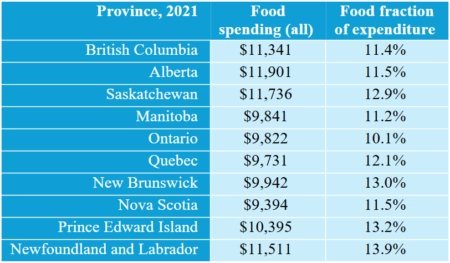
Canada’s territories and First Nations reserves are often excluded from federal food security reports and definitions, hiding the physical and cultural struggles in the north that cannot be equally applied to southern provinces. Reports from York University in Toronto suggest that Indigenous communities – who dominate territories populations – are twice as food insecure as the Canadian average, and the difference on reserves is even higher. The remoteness compounds these problems, as evidenced in Nunavut, which is approximately 20% more insecure than other Inuit populations.
Physical food availability and accessibility limitations challenge diverse, fresh, whole food, and nutrient-dense diet are realities in the north. Fewer grocery stores, trips to those stores, and increased climate change impacts to traditional (i.e. hunting, fishing, harvesting) food availability create a freezer-friendly, low perishability north. Northern accessibility also limits healthcare services which, as discussed, can limit food security improvement if nutrition risks an individual’s health. Remoteness can decrease the number of employment opportunities, reducing the average income in the north and creating a purchase-for-necessity culture. 25%, 39%, and 81% of total sales in Yukon, Northwest Territories, and Nunavut, respectively, is food, notably higher than what the provinces on average are expected to spend (Table 1).

Nutrition North Canada (NNC) contains a food subsidy program that incentivizes remote retailers to sell fresh, minimally processed food items, since northern food prices are inflated as a reflection of high transport costs from distance and infrastructure challenges. Businesses are paid and charge less for a select list of goods (the Revised Northern Food Basket), provided shoppers know how much the government contributed on shelf labels and receipts. While food price stress is partially alleviated, very low-income households can afford at most 13% of the Revised Northern Food Basket and critiques of the NNC subsidy suggest that ordering efficiency, confusion over reporting requirements, cultural foods exclusion, and ignoring dietary preferences limit the cost savings potential of the program in the north.






